Understand Dtex in Artificial Grass
- 08/17/2021
Nowadays, artificial grass is widely applied in football fields, hockey fields, rugby fields, multi-purpose fields, residential, commercial, pets, urban landscape and so on.
If you are planning an artificial grass project, you may ask some artificial grass companies for quotes and samples, then you will see some artificial grass specification parameters on the specification sheet or the sample label.
These parameters somehow determine the quality, lifespan and cost of artificial grass. In most situations, you can choose a suitable product based on the supplier’s recommendation. However, if you want to go further, you need to understand what these parameters mean.
This post focuses on a parameter value that is often neglected in the manufacture of artificial turf but has a significant impact on the performance of artificial turf: Dtex. Regarding Dtex in artificial grass, you need to know the following.
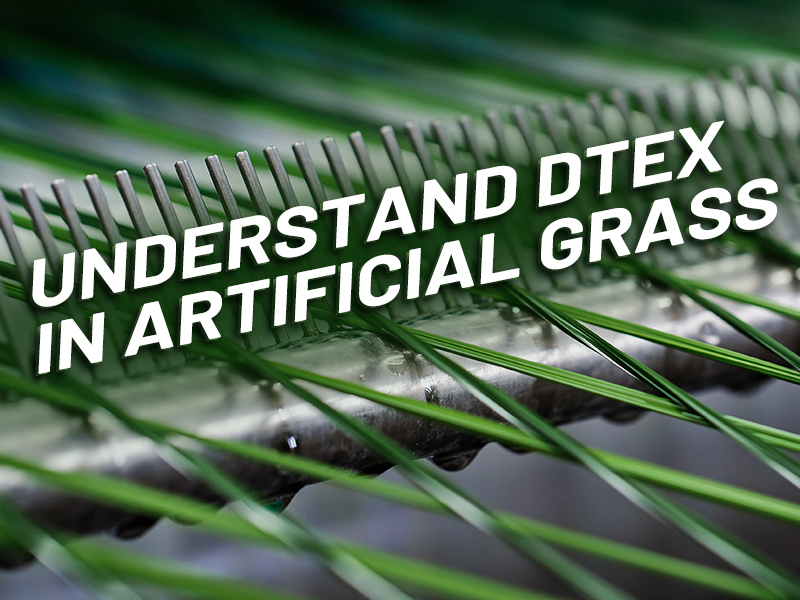
In this article:
What is Dtex in artificial grass?
Dtex is short for Decitex, which is the unit of measure for grass fiber. Dtex represents grams per 10,000 meters of grass yarn. Dtex is the count grading for filament and spinning yarns recognized by all international bodies in the man-made fibers industry.
Dtex is one of the major factors affecting the face weight of synthetic grass. Generally speaking, the higher the face weight, the more the material and the higher the price.
Why Dtex in Artificial Grass is Vital?
Why is the Dtex value significant in determining the quality and applicability of artificial turf? You can easily infer that the higher the Dtex of a single grass filament, the thicker or wider the grass filament will be, which will make it more hardwearing and will last longer. You’d be absolutely correct! If other specifications same, higher Dtex in artificial grass means better standing ability, increased wear resistance, denser touch feeling.
Therefore, when choosing an artificial turf product, it is vital to ensure that the grass you choose will be capable of withstanding the required level of use. It is crucial to consider the Dtex in artificial grass, especially for sports turf.
What Dtex turf do I need?
The answer depends entirely on the application scenario.
For example, used for football or rugby games, as well as regular club training fields, a grass with high Dtex value can provide excellent sports performance and has a longer warranty, making it a worthwhile investment.
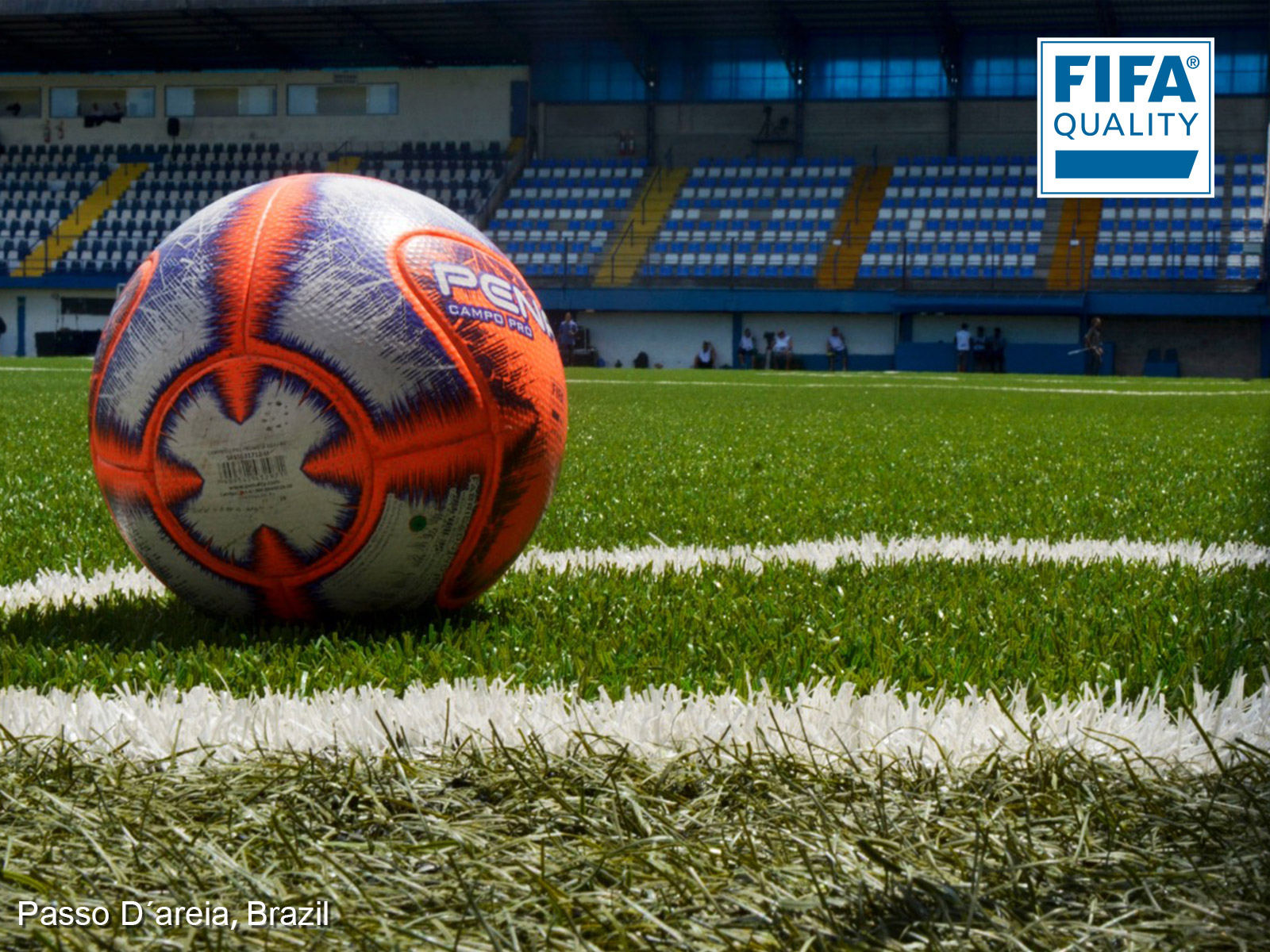
Dtex in artificial grass is usually divided into 6600Dtex, 8800Dtex, 9700Dtex, 12000Dtex, 15000Dtex, etc. Normally, the football field uses more than 8,800 dtex.
Our football grass flagship product, Superb, is designed for high frequency training and competitions. Superb yarn has a diamond shape, with a thickness of 400µm – one of the thickest in the market, weighing 17,000 Dtex. Superb yarn has extreme durability, up to 25,000 cycles measured through the Lisport XL test, and over 400,000 cycles on the standard Lisport test, still keeping good condition.
However, for home garden lawns that are pet-friendly, can withstand children’s play, and are suitable for frequent walking, there is no need to pursue lawns with high Dtex. For the same product, the grass with higher Dtex will be denser and the appearance will be more luxuriant, yet the thicker the grass, the stiffer the grass. Hence, if you prefer a softer look and feel, you can opt for lower Dtex artificial turf.
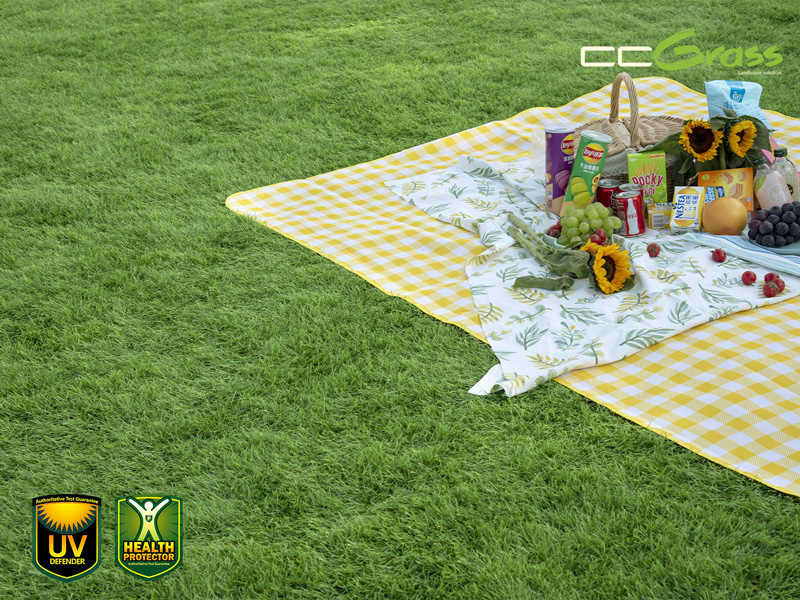
Simply put, don’t pay a premium for a high Dtex product if you don’t need it. You can consult CCGrass and we can help you make the appropriate Dtex choice according to your synthetic turf needs.
Next, let’s take a look at the other parameters.
Other artificial grass specifications
Pile Height
The length of the tufts measured from the primary backing top surface to their tips, usually measured in millimeters (mm). Pile tufts should be gently extended but not stretched during accurate measurement.
Gauge
The gauge is the measure of distance between two lines of stitched artificial grass, which plays an important role in the overall look and feel of your artificial turf.
Usually using ‘inch’ as the unit, the common gauge includes 3/4 inch, 3/8 inch, 3/16 inch, 5/16 inch, 5/32 inch…
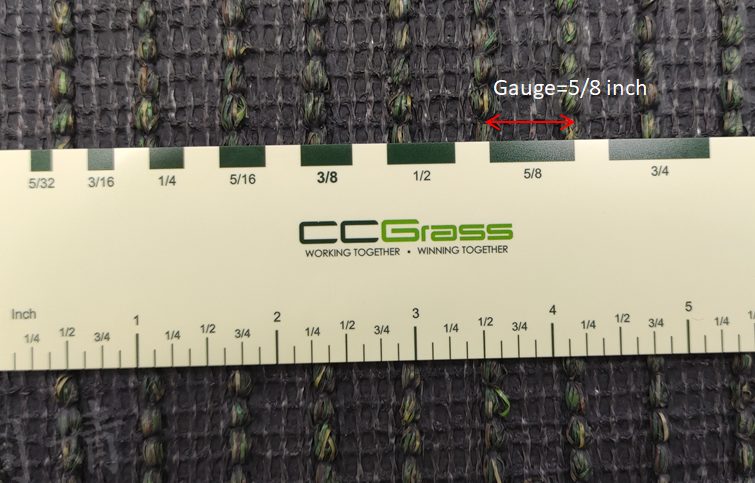
Stitch Rate
Stitch rate is the number of stitches per 10cm in the stitch line direction. The gauge of a machine does not change but the stitch rate can. The higher the number, the denser the grass.
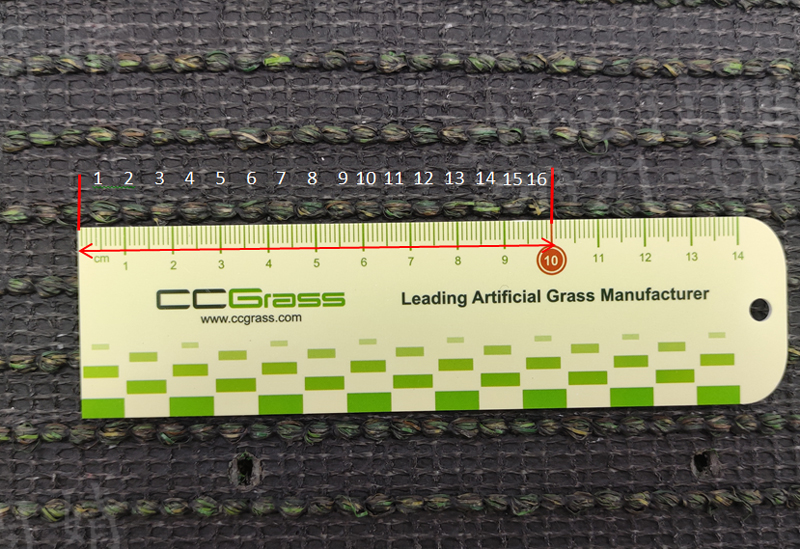
Density
Also known as tuft density, refers to the number of stitches of artificial grass tufts within one square meter. The density depends on the gauge the stitch rate.
Conclusion
Dtex in artificial grass is an aspect that needs to be considered carefully before purchasing artificial turf. Of course, there is no one-size-fits-all solution, and the type of grass that best suits your needs depends on your personal circumstances.
To help you select the best-performing artificial lawn for your particular application, you might find one of the guidelines listed below useful:
https://www.ccgrass.com/top-20-tips-for-building-the-perfect-pitch/
https://www.ccgrass.com/know-about-artificial-grass-for-garden-lawn/
https://www.ccgrass.com/time-to-install-artificial-grass-for-backyard/
https://www.ccgrass.com/choose-a-reliable-artificial-grass-for-dogs/
https://www.ccgrass.com/how-to-choose-synthetic-grass-for-commercial-and-public-use/
https://www.ccgrass.com/how-to-choose-artificial-grass-lawn-for-your-office/
Call us at 86 25 6981 1666 or email us at [email protected] to find out more today!



